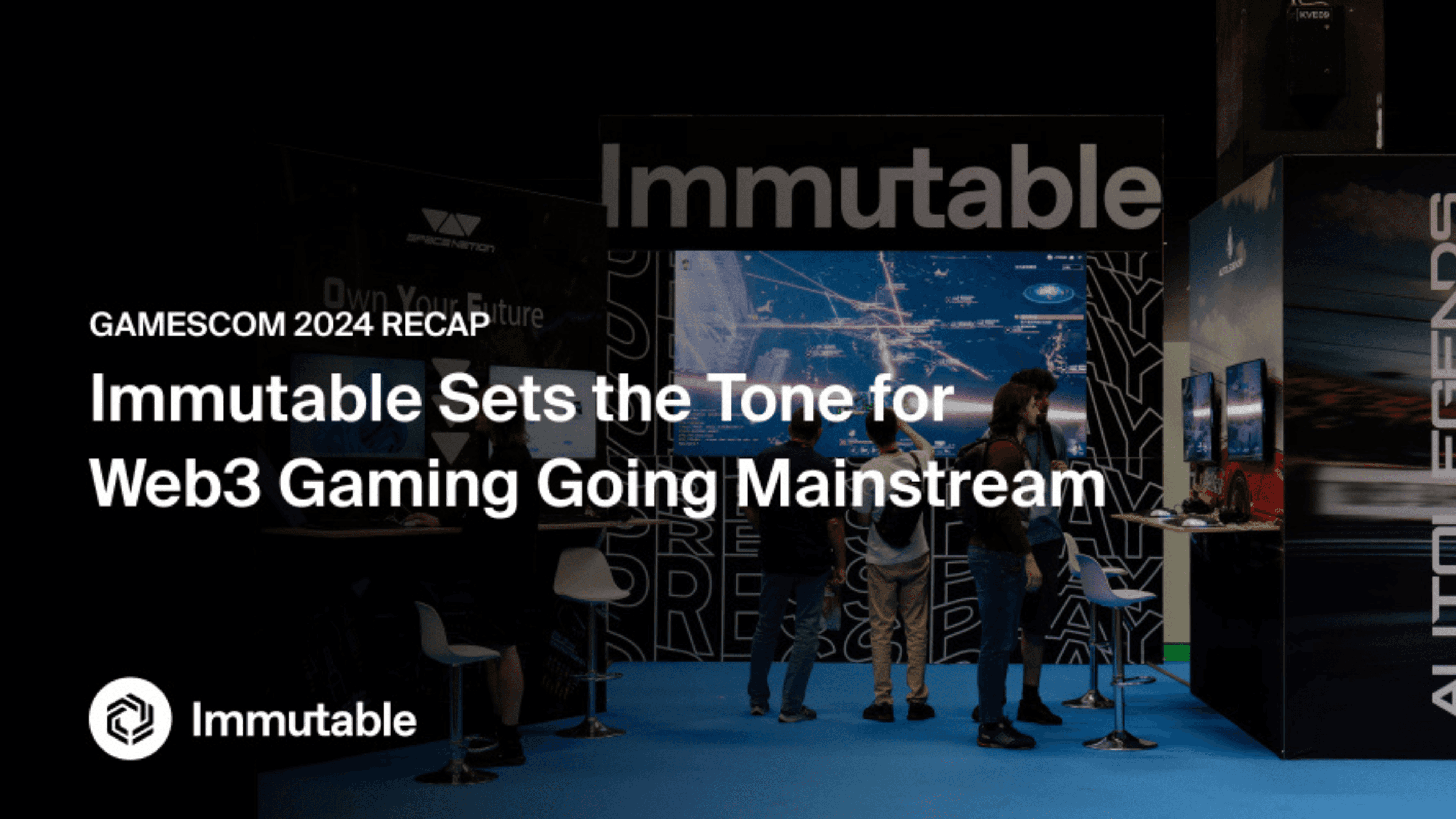What is Gamescom?
Gamescom is one of the biggest gaming conventions in the world, held every August in Cologne, Germany. Think of it as a multi-day celebration of everything gaming: from AAA publishers showing off their upcoming blockbusters to indie teams demoing passion projects, with hardware companies, streamers, and fans filling every corner.

Gamescom 2025
The event is split between two sides. There’s the business area, where publishers, developers, and media connect, and the entertainment area, which turns into a massive playground for fans to try games months before release. Add in a busy calendar of side events, after-hours mixers, and esports showcases, and you get a week that feels like gaming’s version of a music festival.
For Web3 teams, Gamescom is one of the few mainstream stages where they can stand next to traditional publishers and introduce new players to their projects. While the Web3 footprint has shifted year to year, the event remains an important checkpoint for anyone in the gaming industry who wants to see where things are heading.
First Impressions
Gamescom 2025 hit differently. Compared to last year, the whole show felt less loud, both in energy and in actual noise levels. For someone like me who thrives on the chaos of big expos, that was a bit surprising. The crowd was still huge, Cologne was still buzzing, but the vibe inside the halls leaned more measured than electric.
What stood out most was the drop-off in Web3 gaming presence. Last year, I spotted titles scattered across indie corners and tucked between AA demos, making the hunt feel like a treasure map. This year, most Web3 projects grouped together under partner booths or joined forces with bigger chains. It was efficient but less fun for explorers like me.
The Web3 Presence
Let’s be real: Web3 was not the star of this year’s show. There were fewer big announcements, fewer surprises waiting around corners. Instead, I found most games embedded in larger chain pavilions, sometimes overshadowed by non-gaming tech on display. It makes sense from a budget standpoint, but it also underscored how hard it is for these teams to stand out without major traction.

Web3 games in photo: Gladiator Mayhem, Panzer Dogs, Sleepagotchi
That said, the teams that showed up still showed heart. I ran into passionate builders giving live demos, chatting with curious players, and trying to bridge the gap between skeptics and believers. That effort alone keeps me rooting for them.

Web3 games in photo: Off the Grid, Wilder World
Are Booths Even Worth It?
After another year of walking miles through booths, I’m still not convinced they’re the best use of resources for early-stage Web3 games. Most of the builds on display weren’t polished enough for the public, and you could tell casual players didn’t always understand what they were looking at.

Web3 games/booths in photo: Hexenagos, Pemgu Clash, Might & Magic Fates TCG
If the goal is traction, a good online playtest campaign or a well-timed community activation probably delivers more return than a pricey expo booth. Still, I won’t discount the few that pulled it off. I played a handful of demos that genuinely kept players hooked, and those devs deserve credit for turning heads in such a crowded space.
Side Events and Networking
One thing I love about Gamescom is the orbit of side events that pop up around the main show. But let me tell you, my feet would love it if we all agreed to host just one big Web3 mixer instead of three separate ones on the same night. I caught myself bumping into the same crew in different venues, which is fun in theory but brutal in practice after a full day on the show floor.
The real value of Gamescom, for me, is still the people. Talking with founders face-to-face, meeting community members who’ve only been avatars on X, and grabbing late-night drinks where the real conversations happen, that’s the stuff that makes the trip.

The Blockchain Game Alliance Booth
Tips for First-Timers
For anyone thinking about making the trip next year, here’s what I’d recommend:
- Get a trade ticket. It makes life easier when moving between areas.
- Stay outside Cologne. Hotels in the city spike during Gamescom, but nearby towns with decent transport save a ton of money.
- Go with a plan. Mine was to track down every Web3 game. Without a mission, the scale of the event can overwhelm you fast.
- Eat some fruit and vegetables before flying out. By Day 3 your body will be begging for them.
- Best schedule: Arrive Tuesday morning, leave Friday night or Saturday morning. That’s the sweet spot.
Final Take
Was Gamescom 2025 bullish for Web3 gaming? Not really. The tone was muted. The hype was smaller. And if you only measured success in big reveals, you might even call it disappointing. But here’s the thing. The builders are still building. The believers are still showing up. And even in a year where the Web3 spotlight felt dimmer, the event reminded me why it matters to keep showing up too.
Would I go again? Absolutely. Because at the end of the day, it’s not just about announcements or booths. It’s about the connections, the random run-ins, and the sense of being part of something still finding its footing.
Now, time to get back to gaming.



